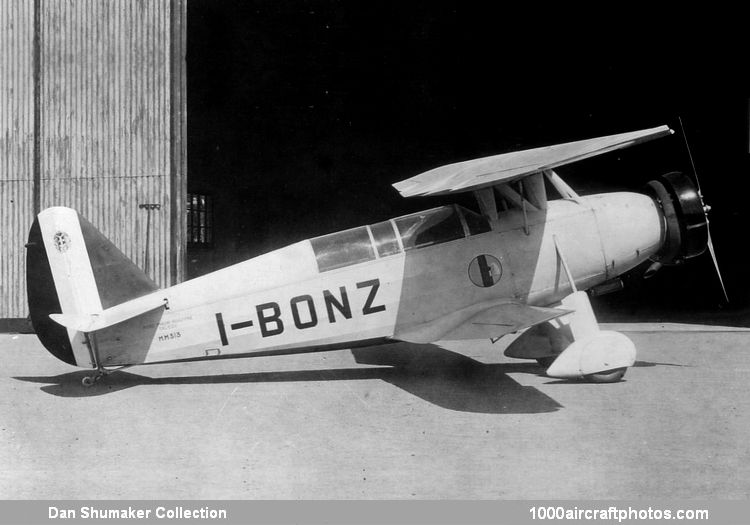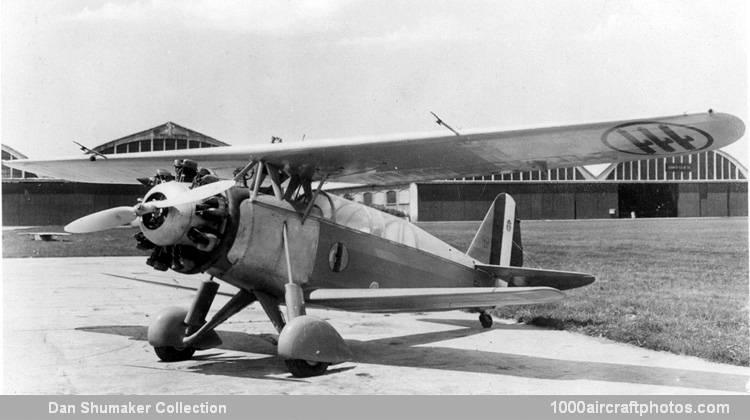12/31/2009. Remarks by Johan Visschedijk: "Ing. Alberto Jona formed his Studio di Consulenza Aeronautica (Aeronautical Consultancy Bureau) in Rome in 1932 and started the design of a two-seat sesquiplane with a pivoting wing, designated J.6. The aircraft was of mixed construction, with a tube fuselage and wooden wing covered with plywood and fabric; it was manufactured by the Piero Magni Aviazione at Taliedo. By intervention of the Italian Ministero dell'Aeronautica (Ministry of Aviation), it was put on static display at the first air show at Milan with the milirairy serial MM313.
Powered by an 140 hp Fiat A 54 seven-cylinder, air-cooled radial engine, the aircraft was first flown (with the wing in a fixed position) by Magni test pilot Vasco Magrini on May 24, 1936, while test flying with the wing pivoting was performed by Giovanni Roccato, with promising results. Subsequently the aircraft was tested by the military at the Centro Sperimentale (Experimental Center) of the Italian AF at Guidonia, near Rome.
Registered as I-BONZ on April 20, 1937, the J.6 was flown that year by the well-known sport pilot Leonardo Bonzi in the Giro Aereo d'Italia, and other races. The aircraft was flown for several years by Jona, after Italy's Armistice with the Allies on September 8, 1943, the aircraft disappeared into obscurity.

